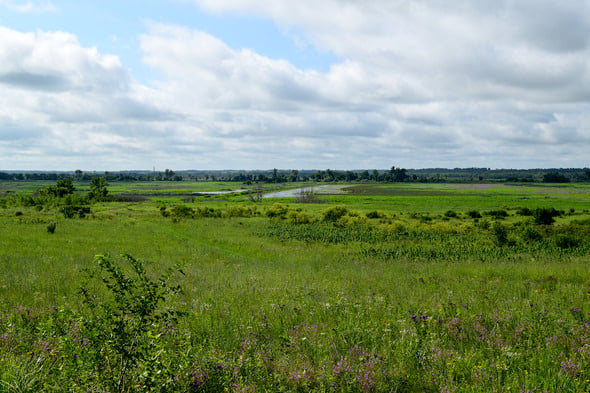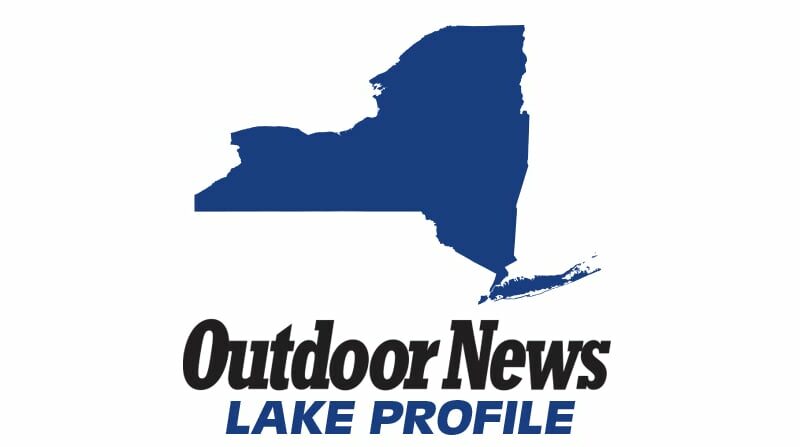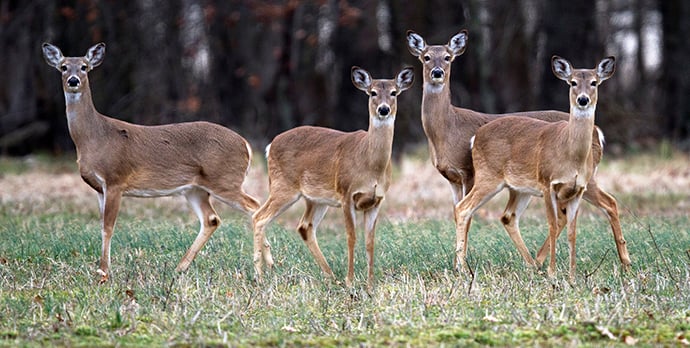Habitat diversity attracts birds and birders to Iowa River Bird Conservation Area – Outdoor News

Driving slowly along the two-track, generously labeled “340th Street” by Google Maps, Anna Buckardt Thomas has her windows down and is identifying each bird by its call. “House wren, red-winged blackbird, killdeer, goldfinch, catbird, flicker, cardinal, Eurasian tree sparrow, common yellowthroat,” the state avian ecologist said.
This stretch of the Otter Creek Wildlife Area, in Tama County, Iowa, is an eBird hotspot; a popular birding website and app that logs bird sightings for users and adds each individual’s bird records to the global data set.
Birds are attracted to the mix of grasslands, marsh and shrubs in the middle of Otter Creek. Sora and Virginia rails nest here, and yellow rails will show up occasionally in the fall. A warbling vireo is singing. So is an indigo bunting. Dead trees are allowed to remain standing, providing snags for woodpeckers and bluebirds.
MORE COVERAGE FROM OUTDOOR NEWS:
Ammo prices remain stable despite concerns
Jeremiah Haas: Best all-around fishing of the year is coming soon
Hunting from ladder stands can be more effective with the right plan
The area also supports other wildlife including ornate box turtles, regal fritillaries, and the most impressive annual tiger salamander migration in the state – prompting the closure of County Road E66, while the amphibians cross the asphalt, heading towards the marsh.
Otter Creek is part of the Iowa River Bird Conservation Area (BCA), a designation covering a mix of public and private lands that stretches roughly 45 miles along the Iowa River from Iowa County to Tama County.
The Bird Conservation Area program emphasizes habitat conservation at a large, landscape level to establish stable or growing bird populations. Each BCA includes a combination of public and private lands, well-managed for wildlife conservation. The program is non-regulatory, and private landowners participate only if they wish. It’s part of a larger national and international all-bird conservation effort dedicated to the conservation of game and non-game birds alike and is guided under the umbrella of the North American Bird Conservation Initiative.
Today, the Iowa River BCA is a mix of floodplain forest, wetlands, prairie savanna and river oxbows. Dedicated in 2004, it was the first BCA to be centered on a river. The patchwork of habitat, crop fields and rolling hills extends through four counties.
For those new to birding or new to Otter Creek, there is a viewing platform just off U.S. Hwy. 30, that has accessible parking, a ramp to the main viewing area and a spotting scope trained towards the prairie and marsh. It also has information panels on the history of the area.
“There’s so much variety in this BCA, which means it can support large, diverse numbers of birds and other wildlife,” Buckardt Thomas said. More than 230 different species have been documented here, many of which are breeding species. The BCA supports large amounts of waterfowl, shorebirds and grassland birds, including species in greatest conservation need – both migratory and breeding.
Barn owls, northern harriers, short eared owls, have been known to nest in the corridor. Grasshopper sparrow, bobolinks and black-crowned night herons are here too. Peering through a pair of binoculars, the marsh water levels appear to be more conducive to attracting ducks and herons, than shorebirds, she said. It’s actively used all year long, but has the most visitors during migration.
“Having native shrubs, like these dogwoods, is really important for migratory habitat because they produce all kinds of berries in early September, and migrating birds will gobble them up for energy,” she said.
Diving down a two-track, she brings the truck to a stop, bringing the binoculars up to see what’s dancing up ahead – a brown thrasher, another species in greatest conservation need, and three catbirds.
Six pelicans soar effortlessly over the boat ramp and parking lot on the deeper basin, looking for a meal. Yellow-headed blackbirds nest here. Marsh wrens, sedge wrens and common gallinules can be heard.
“The best way to explore Otter Creek is by walking the dikes, because it offers the most opportunity to see birds and other wildlife,” she said. Dikes are mowed to maintain their integrity, providing relatively easy hiking conditions and viewing of the wetlands.
Heading into far southwest Benton County and the eastern section of the BCA, south of the town of Belle Plaine on Hwy. 21, is the main Bird Conservation Area sign and information kiosk.
Here are some of the larger grasslands where American kestrels will nest. Indigo bunting, goldfinches, dickcissels are everywhere. The grasslands also support grasshopper sparrows, bobolinks, northern harriers, and more.
Continuing south, Hwy. 21 passes over the Iowa River and its oxbows on the Iowa County line, where visitors can pull off to search for Baltimore oriels, black-crowned night herons, spotted sandpipers, bald eagles, great blue herons, and prothonotary warblers that have been seen here. Swallows nest under the bridges. Redstarts, Canada geese, wood ducks, hooded mergansers, phoebes, and red-shouldered hawks all nest near the water. Cedar waxwings can be heard from the boat ramp.
“This is a large-scale cooperative habitat partnership where public and private work to improve the quality of habitat on the area,” she said. There are a lot of conservation easements in the BCA, which permanently protect the habitat while the land remains in private ownership.
American bitterns nest here – another species in greatest conservation need – cerulean warblers, yellow warblers, great crested flycatchers, indigo buntings, and song sparrows are also here. Several trumpeter swan families live up and down the corridor and sandhill cranes have been nesting here since 1992. Lots of eagles and belted kingfishers nest and look for food along the river. An eastern kingbird can be heard singing.
“This is pretty much a happening place,” she said.
Flood of 1993 created the Iowa River Corridor
A network of habitat following the Iowa River, arose out of the historic flood of 1993, when many landowners along the river bottom accepted the offer to buy their flood prone property by the federal government as part of the disaster recovery.
That historic event marked the beginning of the Iowa River corridor, a federally owned, state managed public wildlife area that is a major component of the Iowa River BCA.






